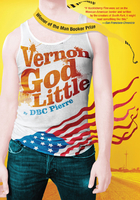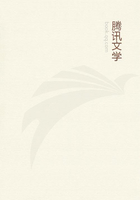Belgium
FLANDERS
RECOMMENDED BY Yannick de Cocquéau
Prick a Belgian with a pin, and you just might find that lambic, not blood, runs from their veins.
"Everyone in Belgium has beer in their heart and their life," Yannick de Cocquéau observed. "You find beer everywhere, in every situation and every relationship. We have a great concentration of breweries and bars. One feels surrounded by beer! There are a wide range of places to enjoy a beer. Depending on your mood, you can find some place that suits you. Overall, Belgians are drinking less beer than they once did—one hundred years ago, per capita consumption was fifty gallons or more a year! [Now it's dropped to a modest twenty gallons per year.] Today, many people are switching from lager to more specialized beers. There's not much binge drinking. It's about quality and tasting something different, not about quantity."
For such a small country, Belgium cuts a large swath across the universe of beer. Tucked between France, the Netherlands, Germany, and Luxembourg, Belgium is roughly the size of Maryland, but is one of the world's largest exporters of beer … and according to the Economist magazine, it produces more than 1,100 distinct brands! (If wine is the libation associated with France, beer is most certainly Belgium's beverage.) Belgium is divided along linguistic and political lines. Flanders, in the north, is primarily the domain of the Flemish people, Dutch-speaking Belgians. In Wallonia to the south, French is the primary language. Being along the physical (and philosophical) border between the Germanic and Latin cultures, Belgium has frequently found its soil the site of armed conflicts staged by its larger neighbors, including World Wars I and II. Belgian people are respected for their fortitude and good nature—perhaps a result of enduring so many historical hardships—and their happy-go-lucky attitude may explain their willingness to appreciate a pint … or fluted stem glass. Geography also helped shape the Belgian palate for a wide variety of beer styles and the use of a diversity of brewing ingredients. While the Bavarian beer-purity law Reinheitsgebot (which forbids the use of any ingredients beyond water, barley, and hops in brewing) ruled Germany in the north, the French to the south used a variety of ingredients, ranging from herbs and spices to cherries and raspberries. Belgium borrowed from each tradition.
Belgium has a long—very long—brewing history. Barley has been grown in the region's cool climate since at least the third century AD—well before Belgium was Belgium—and the barley was used to brew beer, which proved to be an effective medium for storing the nourishment the grains held. Some of the breweries still operating today date back to the Middle Ages, including one of Belgium's best-known (if less adventurous) brands, Stella Artois. When many outsiders think of brewing and Belgium, monasteries come to mind. In earlier times, monks brewed beer to sell to help cover their costs of operation and to serve to lodgers. Today, there are six true Trappist abbeys left that brew—Orval, Westvleteren, Rochefort, Westmalle, Achel, and the best-known brewing monastery in America, Chimay. According to the International Trappist Association, to be Trappist ale, beer must meet three criteria: 1) The beer must be brewed within the walls of a Trappist abbey or in the direct surroundings, by or under control of Trappist monks; 2) the brewery, the choices of brewing, and the commercial orientations must depend on the monastic community; 3) the economic purpose of the brewery must be directed toward maintenance of the community, assistance and not toward financial profit.
If there are two beer styles that speak to Flanders and the Flemish people, it would be Flanders red ale and lambics. Flanders red—sometimes known as Flanders red-brown—is one of the original "sour ales" and is closely associated with West Flanders. Both sour and sweet to the taste, Flemish reds are generally the result of a mixed fermentation and a blend of younger beer and beer that's been matured up to two years. "It's a beer that's perfect for wine lovers," Yannick continued. "It's the perfect beer to help wine aficionados begin to cross over to beer." The standard bearer of the style is Rodenbach, established in the 1820s in the port town Roeselare by the four brothers Rodenbach. Tours of the Rodenbach facility are available and a must for lovers of Flanders red. "Near the entrance, you pass through the Barrel Cathedral—two hundred and ninety-four perfectly maintained oak casks (foeders in Flemish) containing thousands of liters of maturating ale. It's something to walk between the giants."
Lambics are the oldest beer style in the western world, and for some palates, perhaps the oddest. (Gueuze and kriek lambic are derivations of the style, the former a blend of young and matured lambics, the latter fermented with sour cherries.) Yeast, an element in any brewing process, plays an extremely important role in the production of lambics. "Wild" or "spontaneous" yeasts are allowed to descend into open vessels in the breweries, and fermentation continues for several years in wooden casks. "Making lambics requires a brewer with tremendous expertise with yeast," Yannick opined. "It also takes capital, as the beer has to age for a long time." Cantillon Brewery in Brussels is a good place to learn about lambics, or you can stop at the visitor center de Lambiek in Beersel.
No beer pilgrimage to Flanders would be complete without glimpsing at least one Trappist brewery. A trip to Saint Sixtus Westvleteren showcases the hop fields of Poperinge (where 80 percent of Belgian hops are grown) and allows a peek at the most reclusive of Belgium's monastic brewers. Westvleteren's three products—blond, 8 and 12—may only be purchased at the abbey by reservation and from the café In de Vrede across the street (when available). Most agree it's worth the extra effort; Westvleteren's offerings have been recognized on several occasions as the best beer in the world. (Note: You can't visit the monastery itself beyond arranged beer purchases.)
Given the Flemish people's love of beer, it's no surprise that Flanders is awash in beer festivals. "There's at least one festival every weekend, all year long," Yannick described. "There are also many culinary festivals where beer has an important role. More and more restaurants are pairing refined beers with Flemish dishes." Christmas is a special time of year to be in Flanders, and Christmas or winter beers are very popular. "The tradition dates back to the time before refrigeration, and brewers had to empty their storage spaces to make room for new hops and malts in the early fall. As everything had to go, brewers were given more leeway to make what they wanted—it was a chance for brewers to show regular clients what they really could do. The beers were usually ready by the end of the year, and they tended to be more alcoholic and use lots of spices. It was part of their experimental nature.
"Nowadays, brewers could make these kinds of beers all year long. But they keep it as an end-of-year tradition."
YANNICK DE COCQUéAU is Product Manager for Flanders for Foodies at VISITFLANDERS, in charge of everything concerning beer and tourism in Flanders and Brussels. Beside this "professional activity" he's active in the local beer consumers association, Zythos, and its annual Zythos Bier Festival. As a beer sommelier, Yannick also gives lectures with beer as a central theme. He also likes to brew at home.
If You Go
Getting There: You'll want to fly to Brussels, which is served by many international carriers. The beer regions to the west are a short drive away.
Best Time to Visit: The Flanders beer culture is thriving year-round, though mid-April to mid-October sees the nicest weather. The Christmas season showcases many holiday beers.
Spots to Visit: Rodenbach Brewery (+32 0 51 27 27 00; palmbreweries.com); Cantillon Brewery (+32 2 521 49 28; www.cantillon.be); Saint Sixtus Westvleteren (+32 0 57 40 03 76; www.sintsixtus.be); In de Vrede (+32 0 57 40 03 77; www.indevrede.be).
Accommodations: Visit Flanders (212-584-2336; www.visitflanders.com) details lodging options in the Flemish region of Belgium and provides an excellent beer overview.















